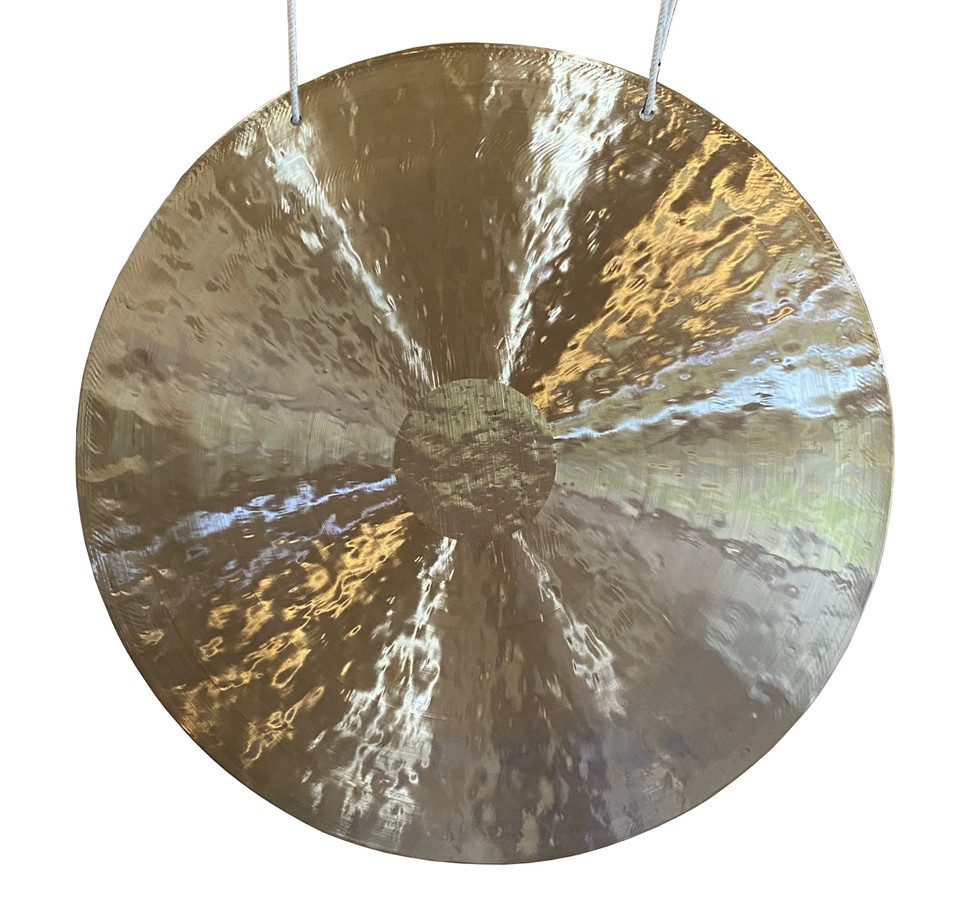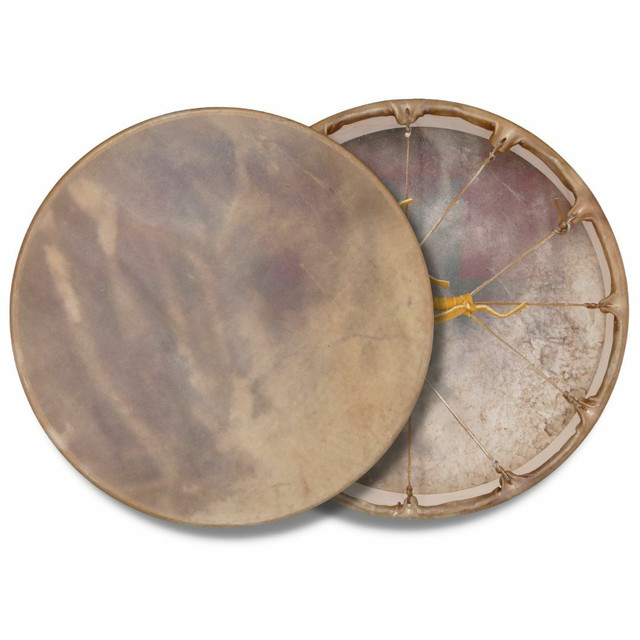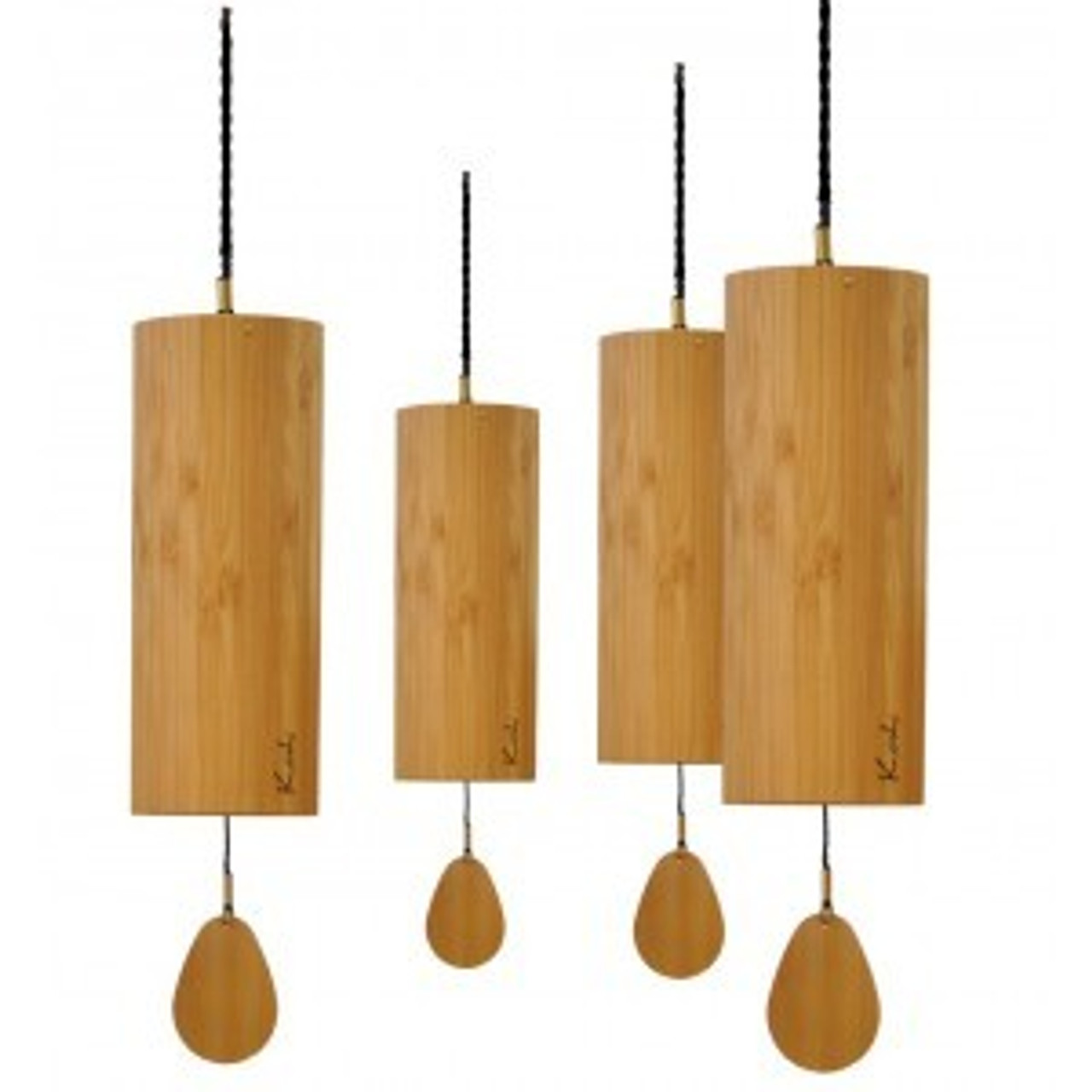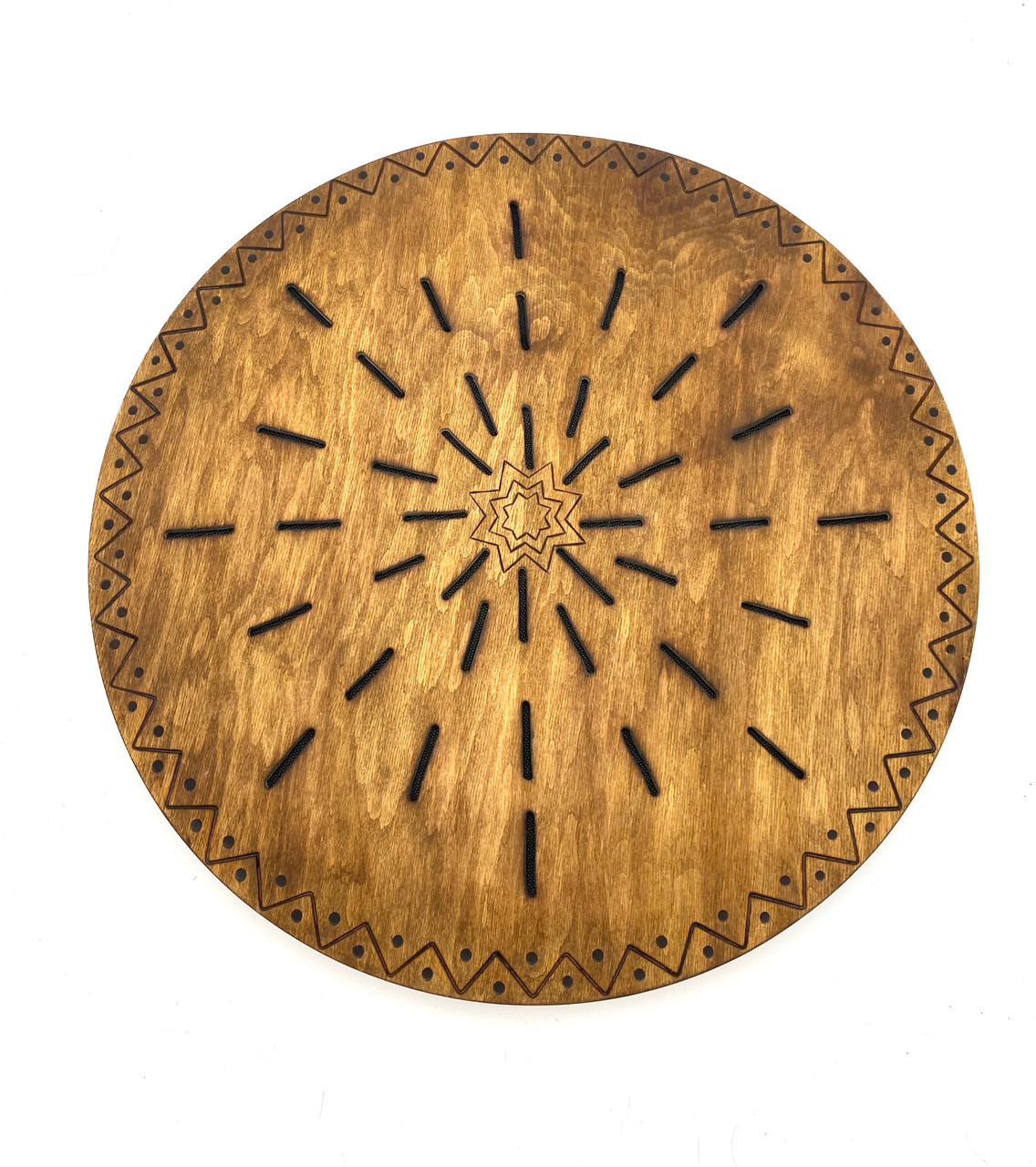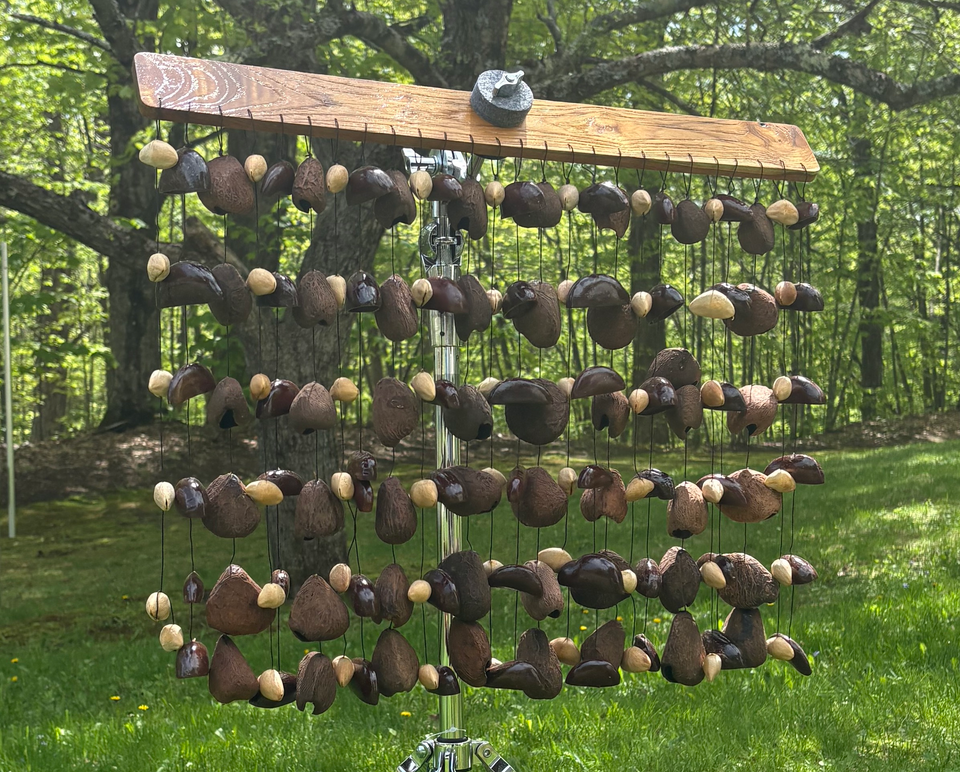How To Buy A Quartz Crystal Singing Bowl
What Bowl Should You Buy?
A Guide For Finding The Right Singing Bowl Or Set For You

Edited 2.14.24 - Jonathan Wood
Buying a quartz crystal singing bowl, whether it is frosted, clear, mineral fusion, or a handle bowl, can be a challenging. The online information about crystal singing bowls, their origins and use, can be far reaching, and even misleading. How do you know which type, pitch, or size of crystal bowl is right for you? This page is to help choose a crystal bowl by providing in-depth information. Please read through it and refer to it often, when making your selection. It will illuminate many things about crystal bowls. We are also available to consult with you to help you understand these options, and to make informed decisions. If you would like to speak to us, please give us a call or email us for personalized support. Our goal is to provide for you the right crystal bowl(s), with the right size, note and cent value.
The Different Types Of Crystal Singing Bowls
Should I Buy A Frosted Bowl, Empyrean Bowl, Clear Bowl, Handle Bowl or Gemstone Bowl?
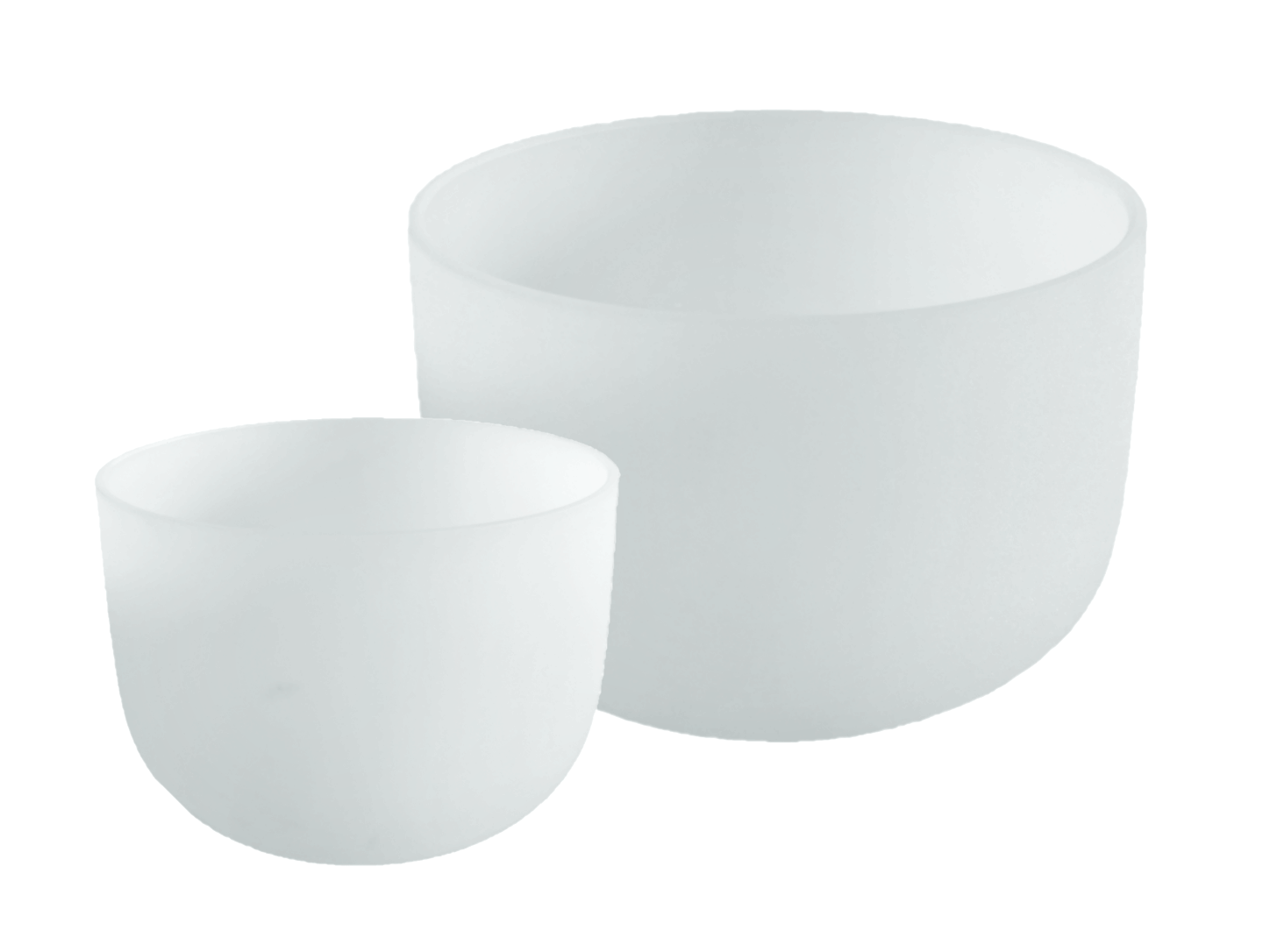
What are frosted singing bowls?
Frosted singing bowls are white, and are rough on the outside and are the best crystal singing bowls for beginners. They have thick walls so can hold the most vibration and are also the sturdiest bowls. Because of this, frosted bowls are generally the loudest and most vibrant option you can choose. They are much louder than clear bowls or handle bowls. If you would like to play crystal bowls for a room full of people, frosted bowls will give them a full-bodied experience of sound-vibration rather than just an audible experience. Last, frosted bowls are generally the easiest bowls to play. They vibrate quickly, and it is simple to make the bowls vibrate steadily at specific volumes. For this reason you can pay less attention to playing frosted bowls, and can focus more on the meditation. Generally, a frosted bowl will sustain about 15-20 seconds, though this varies bowl to bowl. Frosted bowls are generally the most popular option, the least expensive, and the simplest to play, so they are generally what we recommend for anybody to start with.
 What are empyrean singing bowls?
What are empyrean singing bowls?
Empyrean singing bowls are like frosted bowls. They are white, thick, and as loud as frosted bowls, and are just as easy to play. Unlike frosted bowls which are rough, empyrean bowls have been hand-polished on the outside so are completely smooth. This adds a subtle difference of quality between the empyrean bowls and the frosted bowls. Because there is no roughness around the rim of the bowl you will generally be able to get a slightly more clear and stable tone from an empyrean bowl than a frosted bowl. As you run the striker around the outside of a frosted bowl, your striker will move up and down subtly with the roughness of the bowls, which will be reflected in the sound. With the smooth surface of the empyrean bowl, the striker run smooth and flat around the outside of the bowl, creating a more stable tone. Also, in our experience empyrean bowls will have a slightly better sustain than frosted bowls, though this differs from bowl to bowl. Empyrean bowls are great for beginners or experts alike, who are looking for all of the great qualities of a frosted bowl, with an upgraded quality of tone and appearance.
 What are clear crystal singing bowls?
What are clear crystal singing bowls?
Clear singing bowls are clear and smaller than frosted bowls. Clear bowls generally give off two tones when struck; they play a prominent note and then a higher harmonic, around an 11th above. When you sing the bowl, just the prominent note comes through. Clear bowls are not as loud as frosted bowls as they have thinner walls, however, they have a much longer sustain and a slightly more stable and clear tone. If you are playing bowls just for yourself or in an intimate setting, clear bowls would be a great option for you. We suggest buying a clear bowl that is at least 8 inches in diameter, as smaller clear bowls can be difficult to play. The beauty of clear bowls is incredibly apparent when you play multiple clear bowls at once. The harmonics between the bowls are much richer then when you play frosted bowls together. The sound of multiple clear bowls unifies into a wonderful singular experience of sound which resembles a chorus of angelic voices.
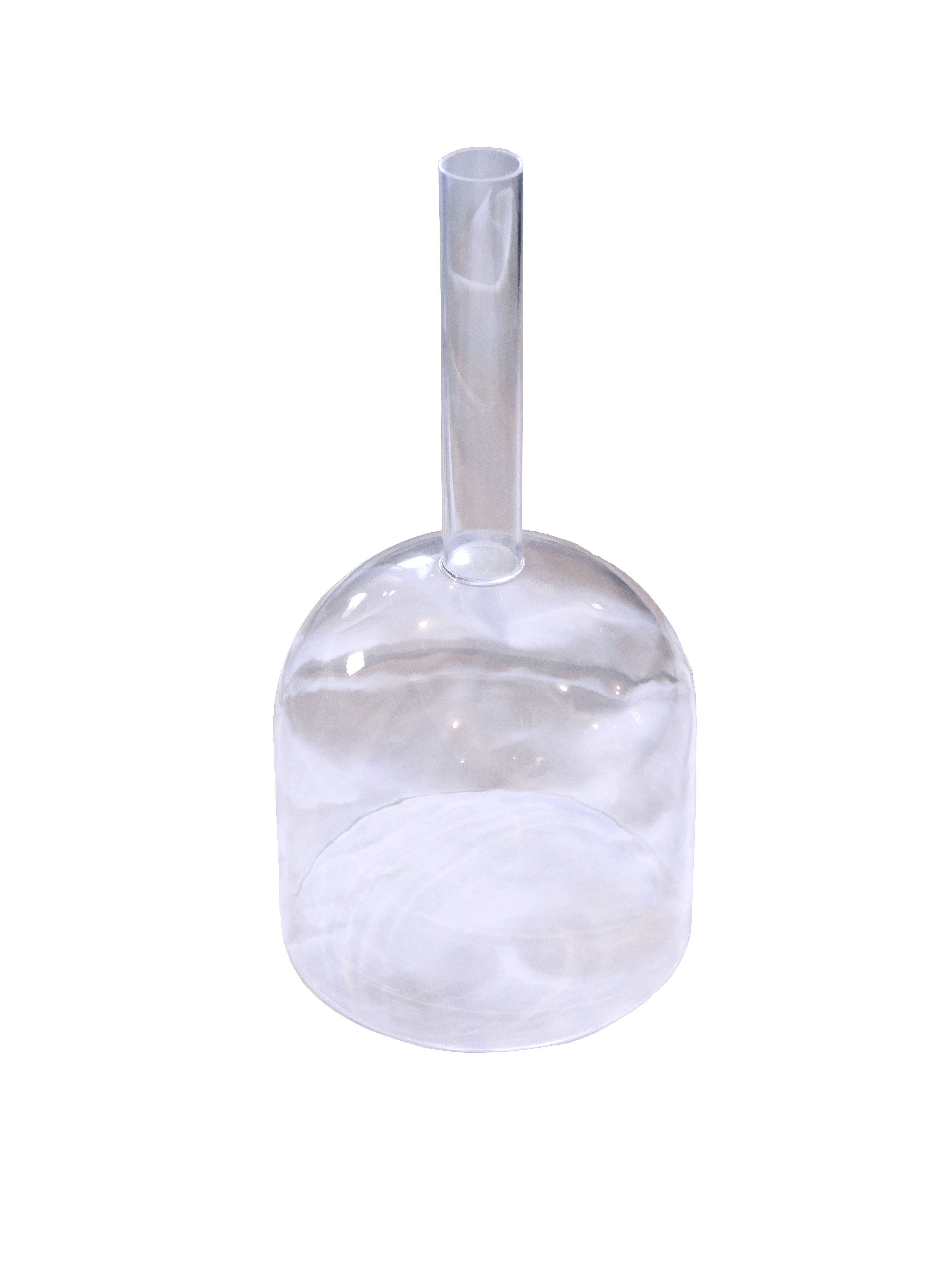 What are clear handle singing Bowls?
What are clear handle singing Bowls?
Clear handle singing bowls are basically a clear bowl with a handle on the end of them. Because there is handle on them, you can play them while moving, standing up, or sitting in a comfortable chair. You can also move them across people’s bodies to work on specific locations on their body. Also, because the bowl is stable in your hand, the handle bowls are louder and easier to play than clear bowls. The only downside to a handle bowl is that you can’t play more than one at a time, because you have to use on of your hands to hold the bowl. We have found value in handle bowls of all sizes, but especially enjoy them 7 inches or larger.
What are gemstone fusion singing bowls?
Gemstone fusion singing bowls can be either handle, clear, empyrean or frosted bowls. Our gemstone fusion bowls start with premade crystal singing bowls. The bowls are then put through a patented procedure to actually infuse gemstones into the bowl, while maintaining the strength of the bowl, and the integrity of its tone. The bowls are super-heated, and then the gemstones, in a powdered form, are fused in. The result are stunningly beautiful works of art to enjoy and meditate with.
Gemstone bowls can be made with a large variety of gemstones. You can actually send us a gemstone from your own collection, which can be ground and infused into one of our bowls. We can as well infused multiple gemstones into a bowl of your choosing, creating a custom gemstone bowl for you.
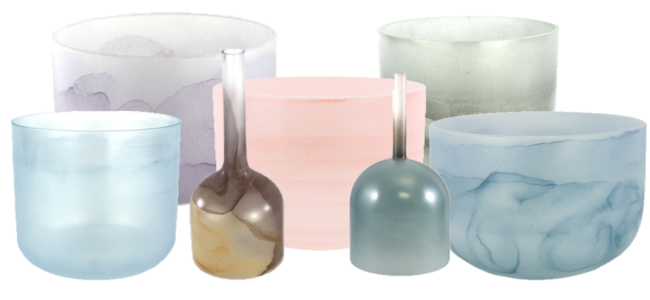
How To Choose A Single Crystal Singing Bowl
What Singing Bowl Should I Buy?
Buying a crystal bowl can seem very complicated, and finding the answer to what singing bowl should I buy? can be difficult. This is a simple step by step guide to purchasing a single crystal singing bowl. We know this information can take some time to read, listen to, and understand. Though getting through this information will lead you to buying the perfect crystal bowl for you needs. We are also available over the phone for consultations so please let us know any questions you have.
Step #1) What type of crystal singing bowl should you buy?
Review the section above to learn about the different types of crystal bowls available, and find the type of singing bowl you want to choose. The best crystal singing bowls for beginners are either frosted singing bowls or clear handle singing bowls. A frosted singing bowl is very easy to play, and will be quite powerful. A handle singing bowl will also be easy to play, sound beautiful, give a good strength and sustain and is a very versatile therapeutic tool.
Step #2) What note singing bowls should you get?
Crystal singing bowls come in different musical notes. Would you like a C note, or a B note, etc? Our top recommendation is to find a note that you like the sound of. We have developed a very useful page of singing bowl sound files in the link below. Listen to each sound file on the page, and find the note that you really like the sound of. Or, tone a simple "ah" tone, and find a note you tone well with. This may sound too simple but it is true. We have been working with sound and meditation for decades, and can tell you with certainty, that the right note to buy is the one you are drawn to or you tone well with. This is the bowl you will want to work with, want to hear, and form a good relationship with. But shouldn't you buy singing bowls for chakras? No. Scroll down and read our section on using singing bowls with chakras. You do not need to buy a singing bowl for a specific chakra. We suggest clicking the link below to listen to sound files of many notes and finding the note of singing bowl you should get:
Step #3) What size of crystal singing bowl should you buy?
Once you go through step 2, you'll have a good idea of the note you would like. Every note of a singing bowl is possible in a range of sizes. For example, the same C note is possible in a 9 inch size all the way to a 14 inch size frosted singing bowls. See our sizing guide below to learn what size of singing bowl you should buy.
Sizes For Frosted and Empyrean Bowls
Frosted bowls come between 7 inches and 28 inches. We generally sell 8 to 18 inch sizes, though have other sizes available. Empyrean singing bowls (which are a style of frosted bowl) come between 6 inch and 14 inch. The general tones that are possible in frosted and empyrean bowls, are available in the same sizes. See the table below for a general outline of how sizes and tones work.
Here is a list of the best sizes for the note you are looking for:
3rd octave C and C# - 22” bowl and larger
3rd octave D and D# – 22” bowl and larger
3rd octave E – 18” bowl and larger
3rd octave F and F# – 14” bowl and larger
3rd octave G and G# – 14” bowl and larger
3rd octave A and A# – 14” bowl and larger
3rd octave B – 12” bowl and larger
4th octave C and C# – 12" - 14” bowl
4th octave D and D# – 12" - 13” bowl
4th octave E – 10" - 12” bowl
4th octave F and F# – 10" - 11” bowl
4th octave G and G# – 8"-10" bowl
4th octave A and A# – 8" - 9” bowl
4th octave B – 8" bowl
5th octave C – 7" - 8” bowl
Many people only want large bowls (18" and larger) because of the strength of their sound. Large bowls produce a large volume with a large amount of vibration. They are also easy to make sing, and easy to meditate too because of this. Many people however, who are sensitive to loud sounds, can’t handle the larger bowls. For example, when playing for a group, you’ll need to be mindful of this in how loudly you are playing an 18" bowl. The bowl can get so loud it can be uncomfortable to listen to. Another thing to consider with larger bowls is that, past 18 inches it may be difficult for you to get your arm comfortably around the bowl to make it sing. This may be a distraction to your meditation, or something you will need to just get used to. Lastly, it is difficult to get many large crystal bowls around you so you can play them all at the same time. If you would like to play multiple bowls to make harmonies, it is much easier to do this with 10-12 inch bowls, which still produce a good volume. So, large crystal bowls, of sizes 16 inches and up are nice because they are so powerful, though can be hard to manage as well because of their size.
Generally 10-14 inches is a great size for a frosted or empyrean crystal bowl. A 14 inch bowl plays with good volume, is generally easy to play, and is generally not too heavy for most people. However, 10 to 12 inch bowls are nice because they as well have good volume, are easy to play, and are also fairly lightweight, so are easy to manage. There is a difference between a 10 and a 9-8 inch bowl. Once you get below 10 inches you get a general decrease in both volume and ease in playing the bowls. We personally like 8 inch bowls, but they do have much less of a sustain, and can take some getting used to. Generally, between 10-14 inches, you will be getting a good sound, a good amount of vibration, and the bowl won’t be too big or too heavy for you to carry around and work with.
Sizes For Clear Bowls
Clear bowls come in sizes 6-12 inches. Generally clear bowls under 10 inches can have a few issues. Clear bowls that are 6 to 9 inches can be difficult to play because they are so lightweight. Further, they are much more delicate than frosted bowls, so can hold far less vibration. If you play a clear bowl too hard, the sound will distort very easily. In this way, clear bowls are not ideal for beginning players. Clear bowls that are 10 inches and larger get rid of the issues of clear bowls. In sizes 10 inches to 12 inches you will find a clear bowl that plays with good volume, is easy to play, and holds a good amount of vibration so it does not distort easily. Another benefit of getting a 10 to 12 inch clear bowl is that you will be receiving a bowl that is lower in tone, which people generally find more pleasing than higher pitched bowls.
Sizes For Handle Bowls
Handle bowls come in sizes 5-8 inches. Handle bowls are ideal in sizes 7 and 8 inches. This is for a few reasons. First, 7 and 8 inch bowls will be louder and will be able to hold much more vibration then a 5 or 6 inch bowl. Because of this you'll be able to feel the vibration of a 7 or 8 inch bowl more. A 7 and 8 inch handle bowl is also a little easier to make sing, though this is only generally. There can be really exceptional 5 and 6 inch handle bowls. If you are looking for a higher pitched bowl then you will be needing to get a 5 to 6 inch handle bowl, as you can only get lower tones in a 7 or 8 inch handle bowl. Some experience an 8 inch handle bowl as being a little bit too heavy and too big to easily manage, so if you are smaller then perhaps you would want a 7 inch bowl.
Step #4) What tuning do you want for you bowl?
From the previous steps, you now know the size, and note you would like. Many people want their bowls tuned to 432hz tuning, or 440hz tuning, and many don't understand what these terms mean. For example, why does each crystal bowl listing end with a cent value? What is -30 cents? What is Perfect Pitch? To understand tuning and cent value, please watch the following video. There is as well a more detailed discussion of cent value, and musical octaves at the bottom of the page. Understanding these terms will let you know understand more precisely the tuning you are purchasing.
Step #5) What bowls are in stock in the note you want?
After you have found a note you really like, the next step is to see if this bowl is in stock ready to purchase. Go to our main quartz crystal singing bowl section, and you can find frosted bowls, handle bowls, clear bowls and empyrean bowls all individually listed by size and note. Or you can simply click one of the links below. Each bowl listed has a sound file. Listen to the sound file, and see if you enjoy the tone of the bowl.
Why We Recommend Purchasing A Harmonic Set
Sink Into The Uplifted Joy Of Natural Harmonies
Playing one crystal singing bowl is a rich and powerful experience. However, when you play two crystal singing bowls together, that are in harmonic union, then you create an uplifted joyous emotional environment to meditate it. The sound of a harmonic set is very pleasing to anyone who hears it. There are even studies that have found that harmonic intervals automatically relax the nervous system. Because of this, playing harmonic intervals is a simple way to more easily access concentrated meditative states, and thus have more profound meditative experiences. We use harmonic intervals almost exclusively in our meditations, and when leading meditations for groups, because we believe in our decades of experience using them and the power they have to affect the human mind and body.
Try these sound files. First play the sound file for the C bowl, and then add in the sound file for the perfect fifth harmony, the G bowl. You can hear how the two come together to create an uplifted harmony. This creates a joyful vibrant environment that you and others can now meditate in. Play all the sound files here to hear what a 5 bowl harmonic set will sound like (note: if you play too many sound files at once, your speakers will start to distort the sound).
14" C (The Fundamental note in this harmonic sequence)
12" E (Makes a Perfect Third Harmony with the C)
11" F (Makes a Fourth Harmony with the C)
10" G (Makes a Perfect Fifth Harmony with the C)
8" HIGH C (Makes a Octave Harmony with the C)
A simple way to start is with either a 2 bowl, or a 3 bowl frosted harmonic set. This is a good way to start utilizing the harmonies in your meditation without needing to invest too much money. A harmonic set does not need to start with a C note. We have different options available. We also sell harmonic empyrean bowl sets. If you would like to learn more, please visit one of the link below. You will find full sound files to make the choice that is right for you:
Buying A Chakra Set Of Singing Bowls-
Why We Recommend Buying The 8 Bowl Set
7 vs 8 Bowl Sets
There are many places on the internet you can find a 7 bowl set of frosted crystal singing bowls, called a chakra set. The 7 bowl chakra set plays to the western major scale do-re-mi-fa-so-la-ti. You can hear this by playing each sound file below. This is a beautiful and harmonic scale that is the foundation of most Western music. Chakra sets are usually in the major scale in the key of C, with the notes C-D-E-F-G-A-B. (The crystal bowl industry has paired these notes with the main 7 chakras that are understood and used in the West. To learn more about pairing notes with chakras, go to the next section).
When discussing chakra sets with our clients, we always suggest, when possible, to purchase a 8 bowl chakra set, instead of a 7. The 7 bowl chakra set plays Do-Re-Mi-Fa-So-La-Ti. Ending on the sound "Ti" is neither harmonic nor conclusive. Melodically and harmonically, it leaves a gap needing to be filled. This is why our 8 bowl chakra set includes the 8th bowl, the 7-8 inch High C bowl, so you receive a C-D-E-F-G-A-B-High C. With this last High C the set sounds Do-Re-Mi-Fa-So-La-Ti-Do. The last Do note in the sequence creates a full circle of harmonies in the set, adding a true sense of harmonic completion. The 8th bowl can be used to work with the “soulstar” or “bah” which is a chakra existing just higher than the crown. Within many traditions this chakra location is known as the seat of our higher self.
You can hear the effect of adding the 8th bowl by playing the sound files below.
With a full chakra set you have a good deal of harmonic potential between the notes. The major scale was designed as an uplifting harmonic scale. So, you have a lot of options for what bowl you would like to play next, creating complex melodies for your clients. Further, many people who are just starting out meditating will have a hard time focusing. Every time you switch your note, it is a opportunity for your client to refocus their energy. If you are working with the chakras, switching notes provides a focused opportunity for your clients to move their attention from one chakra to the next. In these ways, having 8 notes to choose from can help you create more focused, and harmonically powerful meditation sessions.
C (Root)
D (Sacral)
E (Solar Plexus)
F (Heart)
G (Throat)
A (Third Eye)
B (Crown)
High C (Bah or Soulstar)
How To Buy Crystal Bowls For Chakras
The Use Of Crystal Bowls And Chakras
and
Why You Don't Need To Buy A Bowl To Match A Chakra
It is quite common for crystal bowls to be sold in relationship to certain chakras. For example the C would relate to the root chakra, while the B would relate to the crown chakra. We've included a graphic below so you can see the pairings that are used.
You can use this information to simply buy a bowl to match a chakra
Root Chakra - 4th octave C - 9"-14" Bowl
Sacral Chakra - 4th octave D - 9"-14" Bowl
Solar Plexus - 4th octave E - 9"-13" Bowl
Heart Chakra - 4th octave F - 8"-12" Bowl
Throat Chakra - 4th octave G - 8"-12" Bowl
Third Eye Chakra - 4th octave A - 8"-11" Bowl
Crown Chakra - 4th octave B - 8"-10" Bowl
We do see the value in pairing crystal bowls with chakras. The most obvious example is if you want to do a full chakra practice. Having a different note for each chakra will greatly support people who have difficulty focusing on their energetic bodies. If they are focusing on their root chakra, and need to focus on their sacral chakra, moving one note higher in tone will help them as well move their attention one chakra higher. In this way having a different note for each chakra supports a more powerful meditation for your clients.
Further, it is quite clear that what we believe helps create our realities. This is seen and understood in a variety of fields, from quantum physics, to psychology, to spirituality. If somebody believes that the F note will help open up their heart chakra, they will be setting a strong intention while playing the F note, and there will be a good chance that they will see the results they are looking for. If somebody believes there to be a relationship between the a note and chakra, this belief is conducive to an environment where the sound can be a potent conduit of the healing process.
However, we also know that, if you did not want to buy a certain note for a certain chakra, then there is no need to do so. There is no long-standing historical evidence from any mystical tradition to show that the C major scale (C-D-E-F-G-A-B) relates to the chakras. The relationship between the major scale, and the chakras, seems to have first been used in the later half of the last century, and somehow has been misconstrued as fact. In fact, many different traditions use different notes/sounds for different chakras, and different parts of the body.
You can use any sound you want to work on any chakra. The power from your meditation is conditioned by the quality of your own intention and awareness when doing the work (meaning the subtle intentional nuanced movements on your own mind) rather than the specific tone that is coming from your bowl. If you did not want to get a specific bowl for a specific chakra, we recommend buying a crystal bowl you like the sound of. You will get the most long lasting use out of a bowl you really like to hear, rather than a bowl you were told you were supposed to get.

How To Buy Binaural Crystal Bowl Sets
What Are Binaurals?
A ‘binaural’ is a beat pattern which occurs when two sounds that are very close together, play at the same time. When the two sounds come together, they create an oscillation, or third sound. It is a beat pattern, a “wah-wah-wah” pulsation in the air, that is felt and heard. To understand this, imagine you are near a still pool of water, and drop a stone at one end of it, then drop another at the other end. You see the wave forms flowing rapidly out from each rock across the pool, in a synchronous fashion, just wave within wave, until they hit the other. As they hit, and collide, they create other oscillations, or waves, that are more ‘chaotic.’ This is fundamentally what would be happening acoustically in a field of sound as you create a binaural wave pattern with the two bowls which have nearly the same frequency, or pitch.
This binaural is effective therapeutically. It is difficult to hold onto to habitual thought patterns when the binaural is playing, so it is a simple and effective tool to go into a deeper state of concentration.
Decades old science shows, that our brain is constantly producing wave patterns, from Delta, Theta, Alpha, Beta to Gamma. Theta brain waves are between 4-8hz. Science has proven that if we listen to a binaural effect that is between 4-8hz apart, our brain actual responds by producing Theta brain waves, which are typically associated with deep states of relaxation, meditation and sleep.
Here are the different brain states, and their associations:
Brain State Frequency Brain states
Gamma (γ) 20-40, up to over 140 Hz Concentration (most current science we have seen is focusing on 40 hz)
Beta (β) 12–35 Hz normal waking state of consciousness when attention is directed at cognitive tasks and the outside world (some scientists will say 12-20 hz)
Alpha (α) 8–12 Hz Very relaxed, passive attention, focused learning
Theta (θ) 4–8 Hz Deeply relaxed, inward focused, meditative, mystical states
Delta (δ) 0.5–4 Hz Sleep
All states are constantly being produced. But there is a dominant state based on our current focus, mental and emotional attitudes, and intents. With binaural crystal bowl sets, we can intentionally produce these brain states.
Experientially, listening to a binaural crystal bowl set disallows thinking processes, so it is easy to transition awareness into a state of clarity “clearing out” the discursive thoughts. We typically recommend Theta binaural sets, desiring to work with deeper meditative states.
You can hear all of our binaural sets here:
You can also listen to our binaural/harmonic sets here:
How Can I Add To My Current Crystal Bowl Set? How Can I Create A Custom Set?
Many customers contact us with existing bowls, wanting to expand into a larger set. Or some customers want specialty sets, for their specific therapeutic practices. Fulfilling these requests are usually simple, though do require some knowledge on music theory, and also experience with correct bowl sizes and tunings.
If you are looking to create a custom set, or add to your existing bowls, there are a few things we recommend.
First, you could simply reach out to us with your request. We generally respond the same day, and can easily direct you to the right bowls, sizes and tunings to expand your set, or create a custom set for you. This is one of our specialties. So please feel free to reach out to us by email or phone.
Second, it is important to research and understand musical tunings when adding bowls together. This would be a knowledge of hz values, and cent values. For example, if you have bowls that are around -20 cents, you’ll want to buy more bowls at -20 cents, to stay “in tune”. If you bought a bowl that was +45 cents instead, it would be a little disharmonious. If you are not sure what cent value your bowls are at, we are able to help. You can read our article on how to find the tunings of your bowls. Or, if you send us short videos of your bowls, we commonly find the musical tunings of our customer’s bowls for them.
Third, it is important to research and understand musical notes, and how they relate to each other harmonically. For this, there needs to be some knowledge of musical notes, keys, scales, and harmonics. For example, some customers mistake an F# for an F, and end up buying bowls that cause dissonance, not understanding that sharps are different than natural notes. It is important to know what musical key you are working in, and what bowls are harmonious in that musical key. For example, a C and G are beautiful together, but a C and F# are not. This again, is something we can easily support you in, providing guidance and sound files to ensure you get a custom set, or expand your set, in a truly harmonious way.
Understanding Crystal Bowl Tunings
VIDEO: What is 432hz and 440hz Tuning? What is Cent Value?
Understanding the difference between 440hz and 432hz, and understanding cent value can be confusing. Watch the video below to understand these topics, to help you choose the right crystal bowl for your needs.
What is 432hz and 440hz Tuning? Do I Need A Perfect Pitch 432hz or 440hz Bowls?
440hz tuning refers to the international standard for tuning musical instruments. It is simple to understand musical tuning if you imagine a piano, and all the keys of a piano. In the middle of a piano there is a note called the “middle A.” This middle A note is tuned to and resonates at 440hz. All the other keys of a piano are then tuned harmonically in relationship to middle A equaling 440hz. This is why it is called 440hz tuning, as everything is tuned in relationship to A=440hz. 432hz Tuning is simply if you take the middle A note, and flatten it by 8hz to 432hz. Now middle A=432hz, and all the other notes are tuned harmonically in relationship to A=432hz. So, if you purchase a crystal bowl in the note of C, and it is a perfect pitch 432hz bowl, then that C bowl resonates in line with middle A=432hz tuning. If you purchase a crystal bowl in the note of C that is perfect pitch 440hz, likewise the bowl resonates in line with middle A=440hz.
As discussed above, a perfect pitch 440hz bowl assumes that the middle A key resonates at 440hz, and all other notes are tuned in relationship to A equaling 440hz. In order to have a crystal bowl you can use for meditation and ceremony, you do not need your bowl tuned to perfect pitch 440hz tuning. The only reason we recommend perfect pitch 440hz tuning to any of our customers is if they are ever going to play the bowl with another instrument. Mostly all instruments in the world are tuned to 440hz standard tuning, so if you would want to pair your crystal bowls with any other instruments it is important for the bowls to be perfect pitch 440hz tuning so all of the instruments play in tune with each other.
Is 440hz or 432hz tuning better? If you do research on the internet you will find a good deal of information about either tuning, and information that will lead you to believe one is better than the other. We believe that it is important to understand the difference when making a selection. We don't find any hard evidence that proves that any tuning is absolutely better than any other tuning. When great mystics of the past went into meditation, and expanded into states of consciousness, they did not do so caring about 440hz or 432hz tuning. Generally we tell customers it is important to choose whichever crystal singing bowl they like the sound of, because that is what they will most want to listen to. It is true, in general, we find people are more interested in listening to 432hz than 440hz. We have played 440hz and 432hz bowls for rooms of people multiple times, and in general people have preferred the tone of 432hz over 440hz. We believe this to be because 432hz is slightly lower in pitch, so it is slightly less sharp and can be more relaxing in relationship to 440hz tuning. We don't disregard all of the interesting discussion online about 432hz tuning, and appreciate the effort put into understanding the tuning from different perspectives, though know that in terms of meditation the quality of ones own attention, intention, and the depth of their understanding are more important than any one sound.
We have written our full perspective on 432hz tuning in the link below.
What Are Musical Notes, Octaves and Cent Values?
When you are buying a crystal bowl, you are buying a certain tone, or multiple tones that you would like to use in your meditation and energy work. For sake of categorization, these tones are broken down with the musical system of notes, octaves and cent values:
Musical Notes and Octaves
Over time humans have broken down the potential for sound, higher and lower, into 12 different notes: C, C#, D, D#, E, F, F#, G, G#, A, A#, B. The purpose for this can be shown to be mathematical (though we will not go deeply into that here). Each note relates to a range of hz values. For example all the tones that plays between 254.2hz and 269.2hz are considered the note “C.” So there are many different potential tones that are a C note within 254.2hz and 269.2hz. Once you go higher than 269.2hz to 269.3hz then you go into the note C#. As you go higher and higher in tone, you go into the range of “D”, then “D#”, then “E”, then “F” and so on. Musical notes are then a way of categorizing a range of possible sound.
The potential for sound is as well broken down into different octaves. An octave is one group of the twelve notes from C to B. After you go higher then the note B, the notes start over from C but in a higher octave of notes then before. For example the fourth octave are the notes C to B between 254.2hz and 508.3hz. After 508.3 hz you enter the note C again, but in the fifth octave. The fifth octave again refers to a range of hz frequencies, grouped into the musical notes C to B, higher than the fourth octave. Crystal bowls can play in the 3rd octave, 4th octave and 5th octave grouping of notes. The 3rd octave is considered the lower octave, the 4th octave the middle octave, and the 5th octave the higher octave of notes. So, if you get a 12" C bowl, you will be getting the note of C in the middle 4th octave. If you get a 18" C bowl you will be getting the note of C in the lower 3rd octave. Both notes are considered C notes, but the 3rd octave C is much lower in tone then the 4th.
Perfect Pitch Tuning and Cent Value
Imagine a piano. As discussed in a previous section above the middle A key on a piano sings just at 440hz, and all the other notes of the piano are tuned in relationship to A equally 440hz. This is the international standard for tuning, for middle A to equal 440hz and for all other notes to be tuned in relationship to middle A.
A single note, such as a C or D, doesn't represent one specific hz value. The note of C represents a range of hz values. In the 4th octave for example, a C can be anywhere between about 254.2 hz and 269.2 hz. All of the tones within this range are still considered the note of C. So if you just buy the note of C from a dealer, you really don't know the tone you are getting. It could be in the 3rd octave, 4th octave, 5th octave, and who knows what the hz value of it actually is. Just saying the note is a C can mean many many things.
On our website, we further categorize the range of possible hz values for a single note with cent values, and this is the standard for all of the crystal bowl world.
Cent value is a modern way of distinguishing small variations in pitch that occur in a single note. According to cent value, there are 100 cents between each note (C, C#, D, etc.). Please refer to the graph below. As you can see, if the tone is at 0 cents, then it is a perfect pitch 440hz tone. So a 0 cent C tone is perfectly in line with 440hz tuning. There are 100 cents (or tones) between a C and a C#. If you have a +45 cent C note, it is +45 cents sharp of a perfect pitch C, but not quite sharp enough to be considered a C#. If you have a -45 cent C# note, it is -45 cents flat of a perfect pitch C#, but not quite flat enough to be considered a C. As you go past 50 cents, the note referenced is changed. Example: a +55 cent C, does not exist as then it would be referred to as a -45 cent C#.
|----- (-50)----(0 C)----(+50)----|----(-50)----(0 C#)----(+50)----|----(-50)----(0 D)----(+50)----|
In the crystal bowl world, Perfect Pitch 440hz is considered as anything -10 to +10 cents. '0' cents is absolute perfect pitch, however, most musical schools of the west state that the normal human ear does not hear the distinction below 10c of variation, so the crystal bowl industry determines that anything within +10 to -10 cents is 'perfect pitch 440hz'. We take the precision of our musical instruments seriously and are standards for variation are 5 cents.
How To Choose A Quartz Crystal Singing Bowl Video
Which Frosted Singing Bowl Set Should I Buy?
What is 432hz and 440hz Tuning? What is Cent Value?
More Information - Related Articles
What is the best note for a crystal singing bowl?
What is the best crystal singing bowl set?
10 Common Questions About Crystal Singing Bowls
Crystal Singing Bowls vs Tibetan Singing Bowls;
Crystal Singing Bowl Techniques: Mastering the Art of Playing for Optimal Results










